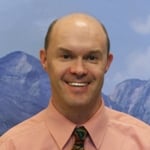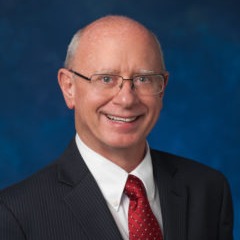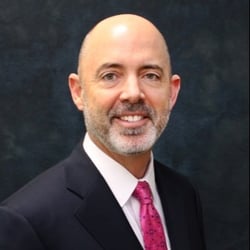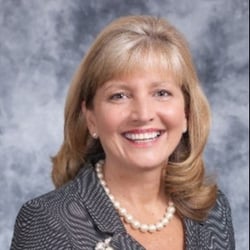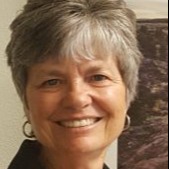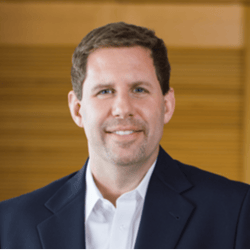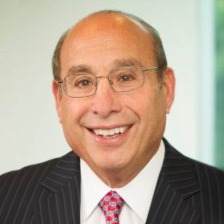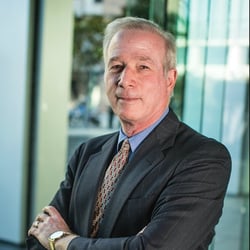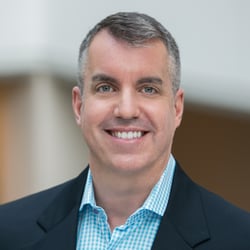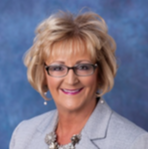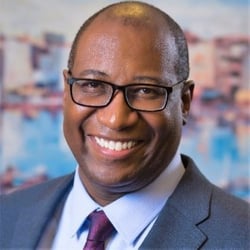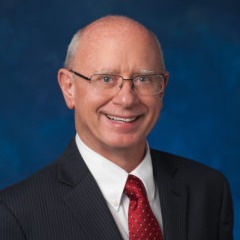 Bob Hemker is the former (now retired) President and CEO of Palomar Health, a district health system serving the health needs of the largest health care district in the Northern San Diego region. In addition to three hospitals, namely Palomar Medical Center Escondido, Palomar Medical Center Downtown Campus, and Palomar Medical Center Poway, Palomar Health offers home health care, surgery, skilled nursing, ambulatory care, behavioral health services, wound care, community health education programs and Level II Trauma service. Bob has extensive experience managing the strategic, financial, and operational aspects of healthcare organizations, working closely with communities, physicians, and board representatives.
Bob Hemker is the former (now retired) President and CEO of Palomar Health, a district health system serving the health needs of the largest health care district in the Northern San Diego region. In addition to three hospitals, namely Palomar Medical Center Escondido, Palomar Medical Center Downtown Campus, and Palomar Medical Center Poway, Palomar Health offers home health care, surgery, skilled nursing, ambulatory care, behavioral health services, wound care, community health education programs and Level II Trauma service. Bob has extensive experience managing the strategic, financial, and operational aspects of healthcare organizations, working closely with communities, physicians, and board representatives.
Key Takeaways
- Perhaps the biggest opportunity for organizations working across sectors is to play the role of facilitator rather than “leader” or primary “doer.”
- Public-private partnerships that focus on social determinants of health (such as food security) can help connect patients with community resources not necessarily available through traditional hospital services.
- Successful collaborations require engagement and buy-in from front-line stakeholders to ensure their concerns are heard and addressed.
TLD Group: How do you define your organization’s health ecosystem?
Hemker: Palomar Health is technically a public entity, meaning we have a publicly-elected board that is elected by the people residing in the district. Our health ecosystem is therefore the entire district covering 750 square miles of South Riverside and North San Diego Counties. In addition, our trauma service area is 220 square miles. This affords us certain privileges of garnering access to revenue streams such as property tax money and other sources. To put it in context, this means that about 2% of our revenue comes from that “publicness” and the rest is from our mix of private and public payers, including risk-based contracting. Although only a nominal piece of our organization is tied to our “publicness”, we have that obligation. It becomes an important conversation because our board members, as being publicly-elected, will try and determine who is our constituency. Our ecosystem is this composite of being a legal district (publicness), but very much in a private sector environment in terms of our key stakeholders.
TLD Group: What is Palomar’s role in managing population health?
Our mission is to “Heal, comfort, and promote health.” We’re very clear on the first two points, but when it comes to promoting population health, we’ve struggled with making the transition from a “sickness model” to a “wellness model.” The bottom line is that we are a provider organization, and trying to address issues of population health can be very consuming and detracting from our everyday responsibilities. But we have a comprehensive continuum of care that we can draw from to break away from the traditional boundaries of healthcare to address the social determinants of health. We feel that we may not necessarily have to always be the “doer” of a health solution, but perhaps we could assume the role of facilitator to have an impact on population health. As an example, take the dependency issue between behavioral health and homelessness. We are a primary provider of behavioral health, but we do not have an obligation to build a homeless center. However, homelessness is an important issue to us because it impacts our ED saturation and recidivism rate, but it’s not necessarily our problem to solve. Instead, we ought to collaborate with the public and/or private sectors to figure out solutions to homelessness.
TLD Group: In your role, about how much time do you spend on managing stakeholders?
Hemker: A fair portion of my time is dedicated to board relations, particularly helping them understand the complexity of healthcare, Palomar’s role in healthcare, their role as board member, and what it means to be a publicly-elected official. It’s important for our board to understand and support our mission to promote health through collaboration, and to recognize that we don’t necessarily have to be the “doer” to move in the direction of a population-health future.
TLD Group: Could you provide an example of a situation in which Palomar has led or participated in a collaborative solution to a population health issue?
Hemker: My Government Affairs Director and administrative fellow led a community health needs assessment to identify our county’s top social determinants of health. They worked with the Hospital Association of San Diego and Imperial Counties (HASD&IC), a collaboration of all the hospitals in these two counties and found that a key barrier to good health in the community was food insecurity. Looking at what we could do, we found that patients who qualify for Medi-Cal benefits (California’s Medicaid program), generally also qualify for CalFresh (California’s Supplemental Nutrition Assistance Program – SNAP). Patients qualify for Medi-Cal when their income is 138% of the federal poverty level, while patients under 200% of the federal poverty level can qualify for nutritional assistance through CalFresh. In addition to screening for Medi-Cal qualification, we decided to ask all of our inpatients two scientifically-validated questions that are meant to accurately and reliably elicit the information needed to identify patients as food insecure, which prevents patients from being singled out and ensure patients are connected with additional resources. If a patient responds positively to either of the two questions, our registration team helps the patient with the CalFresh application and, as a hospital, the application gets expedited. We worked with the county (which processes the CalFresh applications) to become the first hospital system to digitally submit expedited CalFresh applications. As a result, rather than waiting two weeks for the application to be processed, the patient is enrolled in CalFresh in 72-hours.
However, that 72-hour gap for processing the CalFresh application to receive their nutritional benefits card means patients could be discharged into a home with insufficient food. That is when we came up with the idea of providing a discharge “carryover” food box to help those patients with food insecurity get through that processing period with sufficient food. In this situation, we were the facilitator of a solution by 1) assessing patients’ social needs, 2) connecting them with community resources they may not have been familiar with and/or didn’t know how to easily navigate the process, and 3) bridging the logistics gap to ensure they had the necessary resources to stay healthy when not in the provider setting.
TLD Group: What steps did you have to take to take this “food box” initiative from idea to implementation?
Hemker: First and foremost, we had to deal with the logistics of identifying food insecure patients, then connecting the patients with external resources and finally making the food boxes operational by determining how our food services department would be notified of the need, determining the nutritional make-up of the food boxes, where they would be housed, etc. There were a number of barriers we didn’t anticipate, but everyone involved wanted to see this project come to fruition. We also had to determine who this initiative would be handed off to upon execution – whose responsibility it would be to ensure this process is handled moving forward. We charged my administrative fellow with the responsibility for setting up the project plan, identification of stakeholders, and getting this project off the ground. We then identified the appropriate stakeholders to see the project through.
TLD Group: Can you tell us about another collaborative initiative?
Hemker: The county of San Diego has been challenged with insufficient behavioral health capacity, leading to an inordinate amount of holds in the system where the patients are potentially in the ED for days awaiting placement into a care facility. Behavioral health requires a greater level of care – observation, 1:1 sitters, etc. – which creates a backlog in the ED. What we found was that a lot of behavioral health patients didn’t need long-term care; they were experiencing an acute crisis and needed to be re-stabilized. For example, let’s say there’s a patient with an anxiety-provoked situation. They may not need to be sent to the ED, be observed for a couple of days, or put into an inpatient unit. It’s not the right venue of care. We sought a new model of care for behavioral health. One of our executives had a connection at Alameda County, who was running a program to implement a crisis stabilization unit (CSU). They allowed us to make site-visits to better understand their model programmatically. Crisis stabilization is designed as a targeted 24-hour program to stabilize the patient in the right venue of care and return them to their normal situation. If they are unable to be stabilized, then their care would be escalated to an inpatient setting.
Where the collaboration piece comes in is with San Diego county. They had already been exploring this idea on their own, and we were exploring it as a provider. When we came together, we volunteered to be one of their pilot sites. The county provided us with a grant to put together the physical environment, the equipment, and an ongoing care rate they would pay us on a per-day basis. That was all guaranteed to us. This grant provided us the funding resources we needed to get into crisis stabilization, as well as the certainty of what the pay rate we would get from the county would look like. The intent of this collaboration was to keep individuals out of the inpatient setting by properly placing them into the CSU, where they could be re-stabilized and put back on the management of their behavioral health condition including medications.
TLD Group: What were some of the challenges and obstacles you faced to institute the CSU, and how did you overcome them?
Hemker: First and foremost, I had to understand what this new model was going to entail programmatically. I also had to ensure all the stakeholders were supportive of the crisis stabilization model. The biggest challenge was engaging and gaining buy-in from the front-line providers, specifically the psychiatrists. They were concerned about what this new model would mean for their practices, and whether their already limited resources would be spread even thinner. To get them comfortable with this new model and move them “this is how things have always been done” mindset, we conducted site visits in Alameda so they could see this different delivery model in action. Gaining buy-in from the stakeholders is really all about making sure their concerns are heard and addressed.
We also ran into some obstacles when in discussion with the county regarding the pay rate. The county has limited resources, and so their grant dollars and initial pay rate they offered were not going to be sufficient. Through several positive (and at times, intense) conversations, we were able to agree to an ongoing sustainable care rate. It’s also all about relationships. One of the key players on the county side was an individual I’ve known ever since the day I began at Palomar. Palomar has established trust and credibility, so the county could feel certain that their grant dollars were going to be used appropriately. They also knew they had a public health responsibility, because behavioral health was one of the top social determinants in the community needs assessment. I believe they came to realize that this collaboration between public health and provider health would leave to better outcomes for the population we serve and address a very important population health need.
View our other HELM Q&A Interviews:





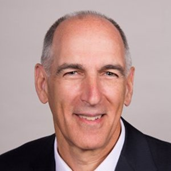

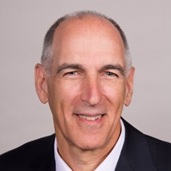 Andrew Baskin, MD, is Aetna’s Vice President, National MedicalDirector for Quality and Clinical Policy and served as the Interim Chief Medical Officer (in 2014). He works on initiatives to measure and improve quality of care, the provision of evidence based care, quality measurement implementation and public reporting, health plan accreditation, and the establishment of performance based networks. Additionally, Andy partners with others to help establish programs which create incentives for more effective and efficient care, influence and assure compliance with healthcare reform regulations, develop products to improve affordability and quality of care, and promote payment reform.
Andrew Baskin, MD, is Aetna’s Vice President, National MedicalDirector for Quality and Clinical Policy and served as the Interim Chief Medical Officer (in 2014). He works on initiatives to measure and improve quality of care, the provision of evidence based care, quality measurement implementation and public reporting, health plan accreditation, and the establishment of performance based networks. Additionally, Andy partners with others to help establish programs which create incentives for more effective and efficient care, influence and assure compliance with healthcare reform regulations, develop products to improve affordability and quality of care, and promote payment reform. Mohamed Diab, MD, Vice President of Provider Transformation leads population health management at Aetna. His focus is on providers as they transform their care delivery to achieve the “Triple Aim” by improving quality of care and reducing unnecessary cost. Mohamed has more than 25 years of experience as a provider as well as an executive in the payer and consulting industries. He has a background in medical management, pharmacy benefit management, clinical informatics and cost management programs.
Mohamed Diab, MD, Vice President of Provider Transformation leads population health management at Aetna. His focus is on providers as they transform their care delivery to achieve the “Triple Aim” by improving quality of care and reducing unnecessary cost. Mohamed has more than 25 years of experience as a provider as well as an executive in the payer and consulting industries. He has a background in medical management, pharmacy benefit management, clinical informatics and cost management programs.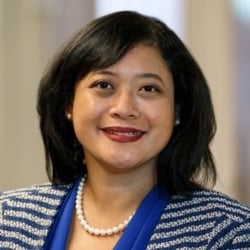

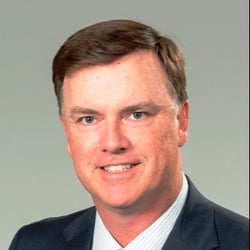

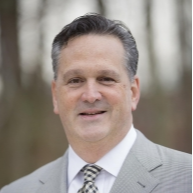

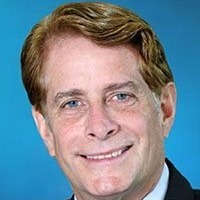

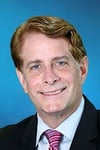 Robert C. Garrett is Co-CEO of Hackensack Meridian Health, which has four hospitals ranked among the top 10 in New Jersey according to U.S. News & World Report – including No. 1 ranked Hackensack University Medical Center - more than any other network in the state. Robert focused on aggressive expansion of the Hackensack University Network before its merger with Meridian Health. As Co-CEO, Robert concentrates on innovation and leading partnerships, including launching New Jersey’s first private medical school with Seton Hall University and a historic partnership with Memorial Sloan Kettering Cancer Center.
Robert C. Garrett is Co-CEO of Hackensack Meridian Health, which has four hospitals ranked among the top 10 in New Jersey according to U.S. News & World Report – including No. 1 ranked Hackensack University Medical Center - more than any other network in the state. Robert focused on aggressive expansion of the Hackensack University Network before its merger with Meridian Health. As Co-CEO, Robert concentrates on innovation and leading partnerships, including launching New Jersey’s first private medical school with Seton Hall University and a historic partnership with Memorial Sloan Kettering Cancer Center. John K. Lloyd is Co-CEO of Hackensack Meridian Health, one of the largest, most comprehensive health networks in New Jersey, which includes 13 hospitals, 28,000 team members, more than 6,000 physicians and over 140 patient care locations across the state. John has focused much of his career on developing a full continuum of care – long before national health care reform mandated such changes. As Co-CEO, John oversees all non-acute care hospital businesses, including population health and the foundations. John’s expertise and vision have helped the network meet and exceed the challenges of health care reform.
John K. Lloyd is Co-CEO of Hackensack Meridian Health, one of the largest, most comprehensive health networks in New Jersey, which includes 13 hospitals, 28,000 team members, more than 6,000 physicians and over 140 patient care locations across the state. John has focused much of his career on developing a full continuum of care – long before national health care reform mandated such changes. As Co-CEO, John oversees all non-acute care hospital businesses, including population health and the foundations. John’s expertise and vision have helped the network meet and exceed the challenges of health care reform. Patrick R. Young is president of Population Health for Hackensack Meridian Health, where he leads the Population Health division and is responsible for accelerating the development of strategic priorities related to health care reform; population health management; Meridian’s Medicare Shared Savings Accountable Care Organization; Hackensack Meridian Health Partners, Hackensack Meridian Health’s clinically integrated network; health insurance partnerships; as well as overseeing Managed Care.
Patrick R. Young is president of Population Health for Hackensack Meridian Health, where he leads the Population Health division and is responsible for accelerating the development of strategic priorities related to health care reform; population health management; Meridian’s Medicare Shared Savings Accountable Care Organization; Hackensack Meridian Health Partners, Hackensack Meridian Health’s clinically integrated network; health insurance partnerships; as well as overseeing Managed Care.
